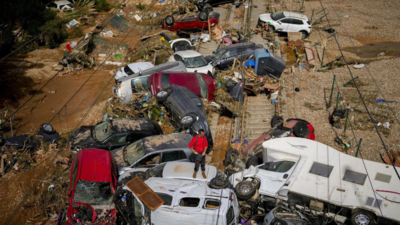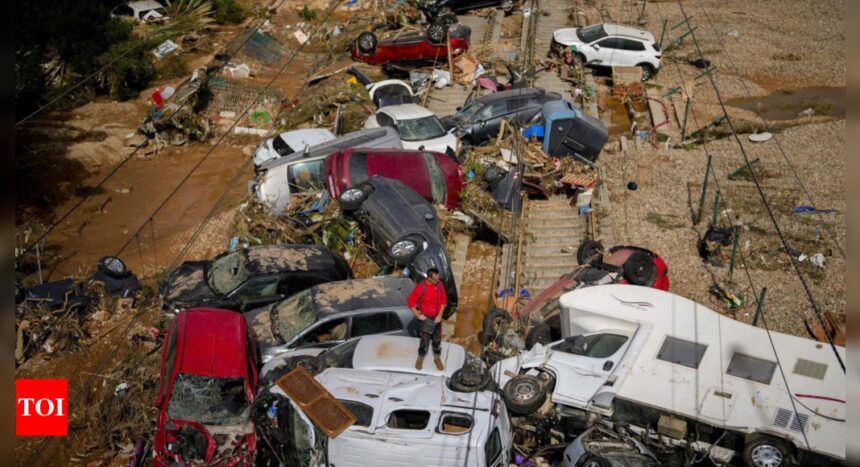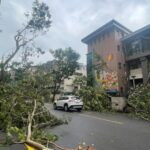
Search teams looked for victims in abandoned vehicles and flooded structures on Thursday as residents tried to recover their belongings from devastated homes after catastrophic flash floods in Spain killed over 150 people.
The aftermath revealed devastating scenes on Thursday amid the widespread mud and debris from Tuesday night and Wednesday morning’s deadly floods. The unprecedented natural disaster left communities struggling to cope with loss and destruction.
The flooding scattered vehicles, toppled trees, and damaged power infrastructure. Streets across numerous Valencia communities were buried under mud, with household items strewn about. The region, located south of Barcelona along the Mediterranean coast, bore the brunt of the destruction.
Officials expect the death toll to rise as many people remain unaccounted for.
“Unfortunately, there are dead people inside some vehicles,” Spain’s Transport Minister Óscar Puente said early Thursday before the death toll spiked from 95 on Wednesday night.
The powerful waters transformed narrow streets into lethal corridors and created violent currents that destroyed homes and businesses. The floods washed away vehicles, people, and infrastructure, demolishing bridges and making roads unrecognizable.
Luís Sánchez, who works as a welder, rescued several people trapped in vehicles on the flooded V-31 highway south of Valencia city, which became filled with hundreds of stranded vehicles.
“I saw bodies floating past. I called out, but nothing,” news agency AP quoted Sánchez as saying. “The firefighters took the elderly first, when they could get in. I am from nearby so I tried to help and rescue people. People were crying all over, they were trapped.”
Regional authorities reported that helicopter teams rescued approximately 70 people from rooftops and vehicles by late Wednesday, though ground operations continued.
“We are searching house by house,” Ángel Martínez, one of 1,000 soldiers assisting rescue efforts, told Spain’s national radio RNE from Utiel, where at least six people died.
An Associated Press journalist witnessed rescue workers removing seven body bags from an underground parking facility in Barrio de la Torre.
“Our priority is to find the victims and the missing so we can help end the suffering of their families,” Spanish Prime Minister Pedro Sánchez said after meeting with officials and emergency services in Valencia on Thursday, the first of three official days of mourning.
Scientists attribute the severity of this Mediterranean storm to climate change, which has intensified temperatures and droughts in Spain while warming the Mediterranean Sea. The World Weather Attribution group’s analysis indicates climate change doubled the likelihood of such an extreme weather event.
The prolonged drought left the ground unable to absorb the sudden rainfall. Spain’s weather service reported that the Valencian town of Chiva received more rain in eight hours than in the previous 20 months combined.
The floods affected areas beyond Valencia, with two deaths reported in Castilla La Mancha and one in Andalusia. Agricultural areas in southern Spain suffered extensive damage, while some regions experienced tornados and hail storms.








